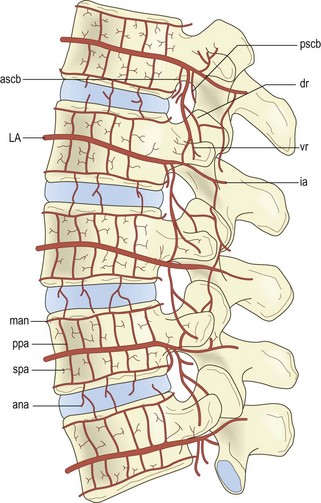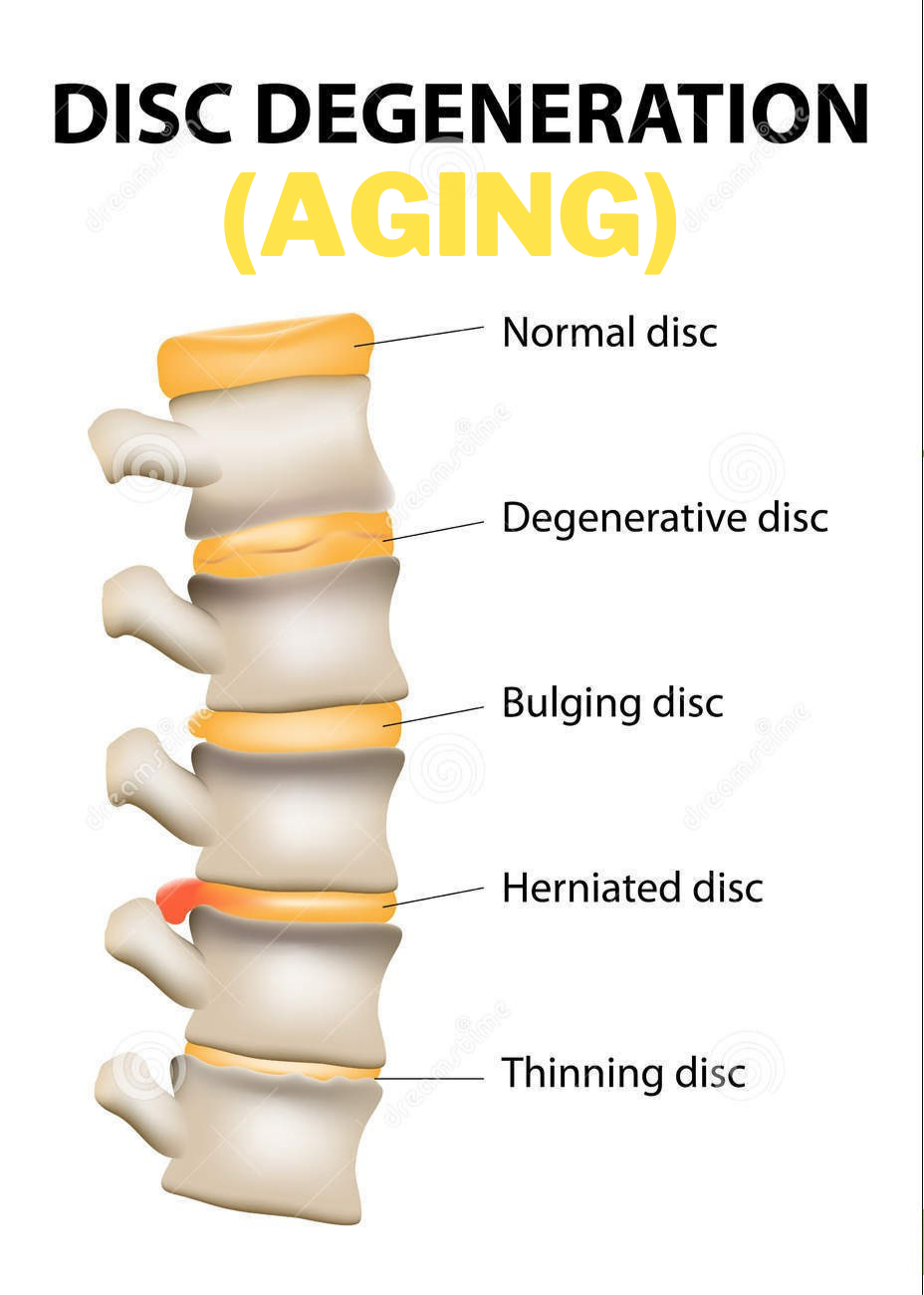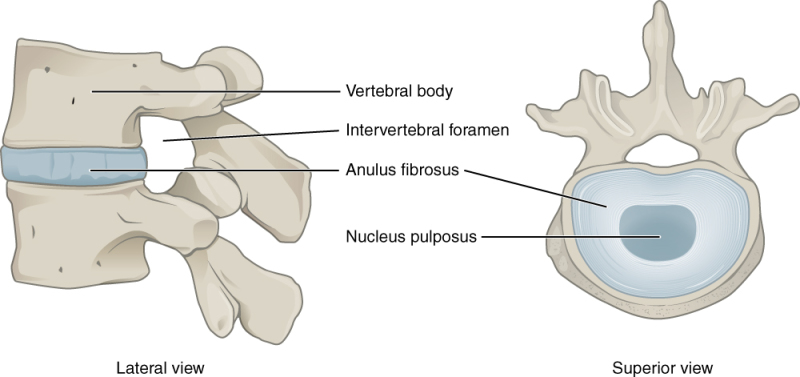To understand the aging disc, you must understand the normal intervertebral disc. We know that the disc has an annulus fibrosus outside and a nucleus pulposus inside.
With aging, there is degeneration of the disc that will alter the function of the disc.
What is the function of the intervertebral disc?
It links the vertebral bodies together and is responsible for about 25% of the spinal column height.
It is a cushion between the vertebrae, so it allows spinal motion, but also provided stability.
Normal Intervertebral Disc Is Made of two components:
Annulus Fibrosus (outside part):
- Has high collagen and low glycosaminoglycan (GAG) concentrations.
- Collagen gives the disc its tensile strength.
- The collagen is Type 1 collagen, the same collagen present in bones.
- The annulus fibrosus is a hard outside structure that protects the nucleus pulposus.
- The annulus fibrosus has a multi-layer laminar architecture made of Type 1 collagen.
- Each successive layer is oriented at 30 degrees to the horizontal in the opposite direction, leading to a criss-cross type of pattern.
- The composition allows the annulus fibrosus. Which has the highest tensile modulus to resist the torsion the axial, and the tensile loads.
- The inner part of the annulus fibrosus has fibrocartilaginous tissue that gradually blends with the nucleus pulposus.
- Posterolateral, the annulus fibrosus is thinner. Has disorganized collagen, and has a greater proportion of vertical fibers.
- It is the weakest part of the annulus fibrosus and this area contributes to the majority of disc herniation.
- The nucleus pulposus is the central part of the intervertebral disc.
- This is the part that is surrounded and protected by the annulus fibrosus.
- It has Type 2 collagen and also has proteoglycans and a large percentage of the water.
2. Nucleus Pulposus (Inside part):
- High in glycosaminoglycans (GAG) and low in collagen content.
- Because it is low in collagen, it is a soft structure that is good in compression.
- It allows compressibility (allows the load to be placed on the spine).
- The collagen is type 2 collagen, the same collagen present in cartilage. (gentler, softer collagen)
- The annulus fibrosus has high collagen and a low proteoglycan ratio.
- The nucleus pulposus has type 2 collagen and also has a lot of proteoglycans, and has a high percentage of water.
- The hydrophilic nature of the proteoglycans will be responsible for the height of the intervertebral disc.
- The molecule of the proteoglycan is responsible for the hydrophilic behavior of the nucleus pulposus and it contributes to most of its ability to maintain the hydrostatic pressure.
- The proteoglycans constitute a low percentage of dry weight within the annulus fibrosus and a high percentage of dry weight within the nucleus pulposus, and it interacts with water to resist compression.
Within the functional spine unit, the nucleus pulposus function is to resist compressive loads.
We should know that pressure within the nucleus pulposus of an adult intervertebral disc is greatest when sitting unopposed and the lowest pressure is when lying supine.
The nucleus pulposus is elastic, so it has low collagen and a high proteoglycan ratio.
It also has chondrocyte-like cells that are responsible for producing Type 2 collagen and proteoglycans. We have to connect these cells to nutrition or blood supply.
What is the blood supply of the disc?
The intervertebral disc is an avascular structure in adults. The capillaries will terminate at the endplate.
The nucleus pulposus receives the majority of its nutrition from diffusion from the blood vessels within the endplates.
The annulus fibrosus is not porous enough to allow diffusion of the fluids.
The nutrients will come from the blood vessels at the margins of the disc and it has to go through the cartilaginous endplate to reach the disc cells.

The blood supply to the endplate and outer annulus decreases with age and the cellular metabolism is affected by decreased nutrition.
With aging, there will be intervertebral disc degeneration and there will be decreased nutrition to the intervertebral disc due to decreased vascularity.
The nucleus pulposus of the intervertebral disc has chondrocyte-like cells that have a limited blood supply and it generates energy through anaerobic glycolysis.
The nucleus pulposus needs glucose because they obtain their energy through glycolysis, even in the absence of oxygen.
The disc cells do not need oxygen to remain alive, but they need glucose, so they die at a low glucose level or acidic ph.
The aging of the spinal column begins very early.
It can be slowed by permanent attention to maintaining the spinal curves (including during the most common activities of daily living)
Normal weight must be maintained throughout life.
For more information talk to a healthcare provider.
If you have any questions about Aging Disc please feel free and leave a comment.
Do share this blog with your friends and family!




